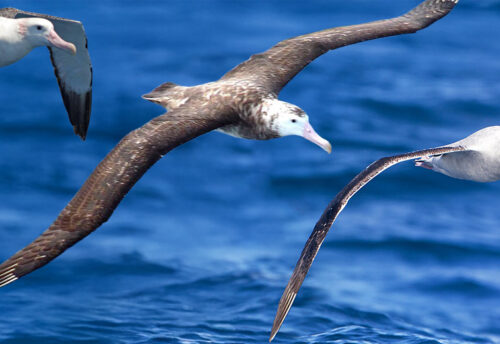
The hellbender, aka devil dog, mud-devil, mud dog, Allegheny alligator, grampus, and snot otter, is the largest salamander species in North America and can be found in southwestern and south-central New York, west to southern Illinois, on south towards northeastern Mississippi and even the northern parts of Georgia, Alabama, and east-central Missouri. Due to habitat destruction, water pollution, invasive species, and over collecting these creatures are listed as Near Threatened by the IUCN. Their populations are also decreasing.
First the Stats…
Scientific name: Cryptobranchus alleganiensis
Weight: Up to 5 lbs.
Length: Up to 29 inches
Lifespan: Up to 50+ years
Now on to the Facts!
1.) There are 2 known subspecies: the Eastern hellbender and the Ozark hellbender
2.) Their name Cryptobranchus means “secret gill.” They get this due to the fact that they have lungs, but instead breathe completely via pores in their skin.
3.) They are the 3rd largest salamander in the world, after the Chinese and Japanese giant salamanders.
4.) Hellbenders prefer clear, fast-moving streams with large, flat rocks. They will defend this prime real estate up to a 1,000 square foot diameter.
5.) They are so partial to their rock, that they have been found under the same rock year after year. Hey, if it aint broke, don’t fix it, right?
But wait, there’s more on the hellbender!
6.) The hellbender’s skin is covered in folds. This increases their ability to obtain oxygen from the flowing water.
7.) Hellbenders prey on insects, small fish, earthworms, and their favorite… crayfish! They lay in wait for their meal to come by and then they gulp the unsuspecting animal into their mouth and crush it with their tiny teeth.
Did you know…?
Unlike other salamanders, they are unable to regrow limbs.
8.) Males will create and guard the nest but, when times are lean, they will also eat the eggs.
9.) Hellbenders are not venomous or poisonous, but their jaws and subsequent teeth are strong enough to break human skin.
10.) Their sense of smell is incredible. Even 1 drop of prey scent is all it takes to send these snot dogs into a feeding frenzy.
But wait, there’s still more on the hellbender!
11.) The belly of a hellbender is huge and allows them to take in prey almost as large as themselves.
12.) When threatened, they will excrete a slimy mucus coating that helps to ward off predators.
Did you know…?
Hellbenders have been around for nearly 160 million years!
13.) Even though they have been accused of eating bass eggs, this isn’t true. They will eat their own eggs, but that’s it.
14.) Hellbender salamanders are predominantly nocturnal (active at night).
15.) Females lay up to 450 eggs, in a burrow or den. The male then fertilizes the eggs and the female is then chased off by the male. The male then guards the eggs till they hatch.
But wait, there’s even more on the hellbender!
16.) The eyes have it. Hellbenders have parietal eyes located on the top of their head. They also have photosensitive cells located all over their body, especially on their tail.
17.) A lateral line is also present along the length of their body. This helps to detect vibrations in the water. This aids in predator and prey detection.
18.) Hellbender battles arise over territorial disputes. Evenly matched combatants end up injuring each other, whereas a smaller vs a larger confrontation typically ends up in the smaller individual being eaten.
19.) Unfortunately, the chytrid fungus has taken its deadly toll on large populations of hellbenders.
20.) Sadly, since the 80s, the hellbender populations have dropped as much as 75%!
Now a Short Hellbender Video!
Also, check out the Critter Science YouTube channel. Videos added frequently!
Want to suggest a critter for me to write about? Let me know here.



